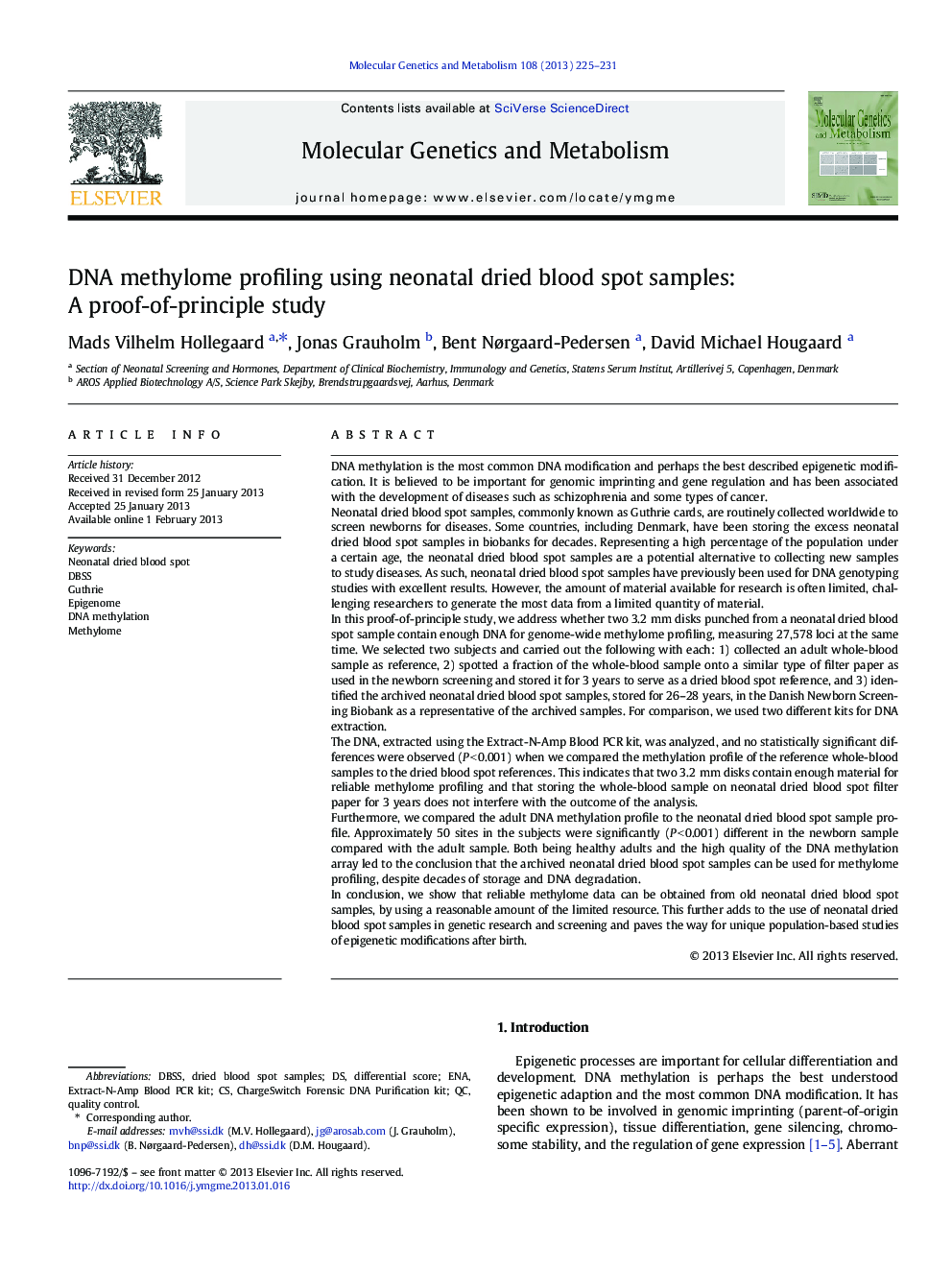| کد مقاله | کد نشریه | سال انتشار | مقاله انگلیسی | نسخه تمام متن |
|---|---|---|---|---|
| 1998477 | 1065810 | 2013 | 7 صفحه PDF | دانلود رایگان |

DNA methylation is the most common DNA modification and perhaps the best described epigenetic modification. It is believed to be important for genomic imprinting and gene regulation and has been associated with the development of diseases such as schizophrenia and some types of cancer.Neonatal dried blood spot samples, commonly known as Guthrie cards, are routinely collected worldwide to screen newborns for diseases. Some countries, including Denmark, have been storing the excess neonatal dried blood spot samples in biobanks for decades. Representing a high percentage of the population under a certain age, the neonatal dried blood spot samples are a potential alternative to collecting new samples to study diseases. As such, neonatal dried blood spot samples have previously been used for DNA genotyping studies with excellent results. However, the amount of material available for research is often limited, challenging researchers to generate the most data from a limited quantity of material.In this proof-of-principle study, we address whether two 3.2 mm disks punched from a neonatal dried blood spot sample contain enough DNA for genome-wide methylome profiling, measuring 27,578 loci at the same time. We selected two subjects and carried out the following with each: 1) collected an adult whole-blood sample as reference, 2) spotted a fraction of the whole-blood sample onto a similar type of filter paper as used in the newborn screening and stored it for 3 years to serve as a dried blood spot reference, and 3) identified the archived neonatal dried blood spot samples, stored for 26–28 years, in the Danish Newborn Screening Biobank as a representative of the archived samples. For comparison, we used two different kits for DNA extraction.The DNA, extracted using the Extract-N-Amp Blood PCR kit, was analyzed, and no statistically significant differences were observed (P < 0.001) when we compared the methylation profile of the reference whole-blood samples to the dried blood spot references. This indicates that two 3.2 mm disks contain enough material for reliable methylome profiling and that storing the whole-blood sample on neonatal dried blood spot filter paper for 3 years does not interfere with the outcome of the analysis.Furthermore, we compared the adult DNA methylation profile to the neonatal dried blood spot sample profile. Approximately 50 sites in the subjects were significantly (P < 0.001) different in the newborn sample compared with the adult sample. Both being healthy adults and the high quality of the DNA methylation array led to the conclusion that the archived neonatal dried blood spot samples can be used for methylome profiling, despite decades of storage and DNA degradation.In conclusion, we show that reliable methylome data can be obtained from old neonatal dried blood spot samples, by using a reasonable amount of the limited resource. This further adds to the use of neonatal dried blood spot samples in genetic research and screening and paves the way for unique population-based studies of epigenetic modifications after birth.
► New dried blood spot samples can be used for DNA methylation profiling.
► Only two 3.2 mm disks, equivalent to 6 μl whole-blood, is needed.
► The choice of DNA extraction procedure is important.
► Archived neonatal dried blood spot samples can be used for DNA methylomics.
Journal: Molecular Genetics and Metabolism - Volume 108, Issue 4, April 2013, Pages 225–231